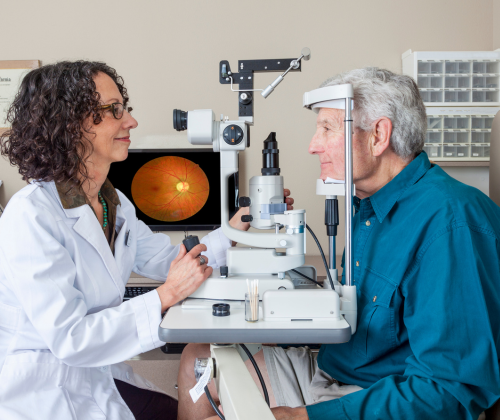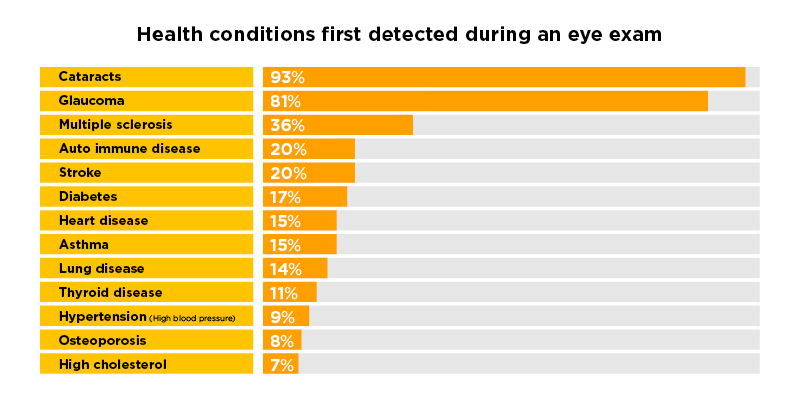Vision Care Misconceptions Part 2: Vision Benefits Don’t Reduce Medical Spend
Eye Exams and Disease Detection
This is the second installment of our four-part series highlighting four common misconceptions about vision benefits among health plans. In part one we debunked the myth that vision benefits aren’t an important consideration for members choosing an MA plan. In this article, we’ll delve into the erroneous belief that vision care doesn’t play an important role in reducing medical spend. Continue reading to discover why that couldn’t be further from the truth.
 Eye Exams and Disease Detection
Eye Exams and Disease Detection
It’s common knowledge that optometrists test for the presence of cataracts and glaucoma during a comprehensive eye exam. You may also know that, given the prevalence of diabetic retinopathy, optometrists are key partners in helping medical providers manage diabetes.
But did you know that multiple sclerosis (MS), stroke, auto-immune disorders, asthma, lung disease, and even thyroid disease can also be diagnosed by an eye doctor during an exam?1
In the 2025 Medicare Vision Insights Report from VSP® Vision Care, a survey of nearly 800 Medicare Advantage and Medicare beneficiaries, more than a third of respondents with MS, and one in five who had experienced a stroke reported their conditions were first detected by an eye doctor through an eye exam.
Percentage of respondents who first learned of their conditions through an eye exam:

How Does Vision Care Reduce Medical Spend?
Medicare spending—and the patient population—are growing and will continue to grow in the coming years.2 Medicare beneficiaries disproportionately carry chronic disease diagnoses, which are the leading drivers of high healthcare costs in the United States and have significant impacts on the finances of both plans and members.3
Eye doctors can detect signs of more than 270 health conditions during an exam—and can often identify them first, as shown above. By helping increase awareness among people living with these conditions earlier, vision care directly contributes to earlier treatment, which is paramount for improving outcomes and reducing long-term medical costs.
Unfortunately, many members don’t realize their eye doctor can also serve as a health partner. In the Advisory Board study, only 5% of Medicare beneficiaries knew that signs of serious health conditions can be detected during an eye exam.
Therefore, education is key to improving preventive eye care, disease detection, member health, and medical spend. Promoting vision benefits within your Annual Enrollment Period (AEP) marketing materials is one of many effective ways to educate members on the benefits of vision care beyond better sight.
In the next installment of our series, we’ll explore the misconception that vision benefits don’t impact member satisfaction.
 Let’s Turn Insights into Action
Let’s Turn Insights into Action
We’re here to support you. As the only national not-for-profit vision company, VSP looks at benefits through a different lens. We're focused on maximizing vision benefits for our partners and your members. It all comes together with our single-source solution for better vision care—custom plans, improved value, and healthier members.
If you have questions or need further assistance, we’re just a conversation away.
Schedule a free consultation and learn how we can adapt these insights for your Medicare Advantage plans.
1 American Optometric Association. (December 2014.) Systemic Conditions with Ocular and Visual Manifestations.
2 Kaiser Family Foundation. (August 8, 2024). Medicare Advantage in 2024: Enrollment Update and Key Trends.
3 Centers for Disease Control and Prevention. (July 12, 2024.) “Fast Facts: Health and Economic Costs of Chronic Conditions.”